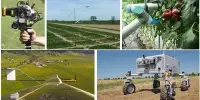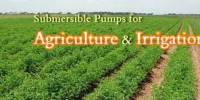Rainwater harvesting is a type of harvest in which the raindrops are collected and stored for future use, rather than allowing them to run off. It is a technique of collection and storage of rainwater into natural reservoirs or tanks or the infiltration of surface water into subsurface aquifers. It is the collection and storage of water from surfaces that rain has fallen upon. It is the collection and storage of rain for reuse on-site, rather than allowing it to run off. Rainwater harvesting enables efficient collection and storage of rainwater makes it accessible and substitutes for poor quality water. It can be a potential alternative source for tackling the acute water crisis faced by rural, urban, and industrial people.
Methods of Rainwater Harvesting
- Surface Runoff Harvesting: In urban areas, rainwater flows away as surface runoff. This runoff can be caught and used for recharging aquifers by adopting appropriate methods.
- Rooftop Rainwater Harvesting: It is a system of catching rainwater where it falls. In rooftop harvesting, the roof becomes the catchment, and the rainwater is collected from the roof of the house/building.
Rainwater can be collected from rivers or roofs and redirected to a deep pit (well, shaft, or borehole), aquifer, a reservoir with percolation, or collected from dew or fog with nets or other tools. Its uses include water for gardens, livestock, irrigation, domestic use with proper treatment, indoor heating for houses, etc. These water can be used for garden and crop irrigation, watering livestock, laundry, and flushing toilets. The stored water is used for various purposes, such as gardening, irrigation, etc. The harvested water can also be used as drinking water, longer-term storage, and for other purposes such as groundwater recharge. Storing and reusing rainwater will also help coastal and hill people in tackling the issue of salinity as well as reduce the excessive demands on groundwater.
In the face of increasing scarcity of water resources, there is a need for every user to think about the possible solution to cope with the crisis. The best and cheapest alternative to the traditional water supply systems is rainwater harvesting. Rainwater is an important water source in many areas with a significant rainfall. It is also a good option in areas where good quality fresh surface water or groundwater is lacking or difficult to avail. Rainwater harvesting is a good alternative in areas where there is sufficient rain but the groundwater supply and surface water resources are either lacking or insufficient.
Rainwater harvesting is one of the simplest and oldest methods of self-supply of water for households usually financed by the user. Rainwater itself is generally clean, but it can pick up microorganisms, pollutants, and debris when it hits your roof. This is why systems for rainwater use inside your home often include filtration or other treatments for safety. Rainwater harvesting is an ideal solution to water problems in areas having inadequate water resources and helpful in mitigation of the effects of drought.
















